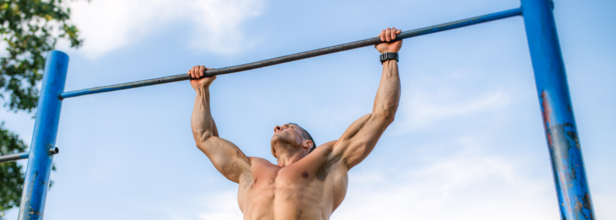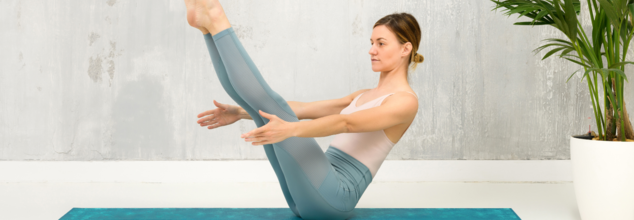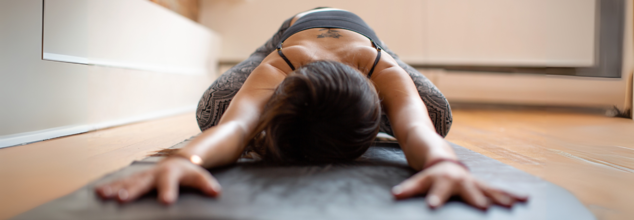- Health Conditions A-Z
- Health & Wellness
- Nutrition
- Fitness
- Health News
- Ayurveda
- Videos
- Medicine A-Z
- Parenting
- Web Stories
Tips To Improve Your Grip Strength

Credits: Canva
What is the one skill you did not even know was a skill, but is the utmost important in almost all your activities? Think about it. It is grip. Usually, grip strength might not be the first thing you think of when working out. But it is just as essential as building up your biceps or glutes. Whether it’s carrying groceries, opening jars, or excelling at sports, a strong grip is crucial for everyday tasks and fitness routines.
So, are there ways to also improve your grip strength, let's figure out!
The Three Types of Grip Strength
Before we get into the different exercise, let's first look at what are the different kinds of grips:
- Crush Grip: The power to grip objects between your fingers and palm.
- Support Grip: The endurance to hold onto something for a prolonged period.
- Pinch Grip: The strength to pinch and hold items between your fingers and thumb.
Exercises for Grip Strength
Here are some of the most effective exercises for improving grip strength:
Towel Wring (Crush Grip)
Tools Needed: A towel and water
How to Do It:
- Wet a towel thoroughly.
- Hold both ends and twist them in opposite directions to wring out the water.
- Alternate directions after each round.
- Repeat 3 times for a solid workout.
Hand Clench (Crush Grip)
Tools Needed: A stress ball, tennis ball, or grip trainer
How to Do It:
- Place a ball in your palm.
- Squeeze as tightly as possible, then release.
- Perform 50–100 squeezes daily to see results.
Dead Hang (Support Grip)
Tools Needed: A pull-up bar
How to Do It:
- Hang from the bar with a double overhand grip.
- Start with a 10-second hold and gradually work up to 60 seconds.
- For added challenge, bend your arms at a 90-degree angle.
Farmer’s Carry (Support Grip)
Tools Needed: Dumbbells
How to Do It:
- Hold dumbbells at your sides with your palms facing inward.
- Walk 50–100 feet, then return to your starting point.
- Repeat the walk 3 times.
Pinch Grip Transfer (Pinch Grip)
Tools Needed: Weight plates (10 pounds each)
How to Do It:
- Hold a plate with your fingers and thumb.
- Pass it to the other hand and repeat.
- Perform 10 transfers, 3 times daily.
Plate Pinch (Pinch Grip)
Tools Needed: Two weight plates
How to Do It:
- Pinch the plates between your fingers and thumb.
- Hold for 5 seconds, then rest.
- Repeat 5–10 times, 3 times daily.
How to Measure Grip Strength
To track your progress, you can measure grip strength in two common ways:
- Handgrip Dynamometer: Squeeze the device as hard as possible to get a reading.
- Weight Scale: Push down on a scale with your hand to measure force.
What is the average grip strength for men and women?
As per a 2011 study, titled: Hand Grip Strength: age and gender stratified normative data in a population-based study, for men between age 20 to 49, it is 103lbs, whereas for women, it differs across ages. Women between 20 to 29, the grip strength is 66lbs, for 30 to 39, it is 68 lbs and for 40 to 49, it is 63 lbs.
Practicing Yoga Everyday Does THIS To Your Sleep Cycle

(Credit-Canva)
Yoga is a mind-body practice that combines careful movements, focused breathing, and being present in the moment. It started over 3,000 years ago in India and has many different styles, each with its own poses, breathing methods, and meditation.
Yoga has many benefits for your well-being, including better mental and emotional health, reduced stress, relief from some types of pain, weight loss, and improved sleep. This article will focus on how yoga can help you sleep better.
Does Yoga Really Help You Sleep?
According to the Sleep Foundation, more than half of people who practice yoga say their sleep has improved, and over 85% report less stress. Many studies show that yoga can help different groups of people sleep better. These studies usually look at the quality of sleep, not just how much sleep someone gets. That's because getting more sleep doesn't always mean better sleep or feeling good. Good quality sleep usually means feeling energized during the day and not being woken up easily at night.
Yoga and Insomnia
Insomnia means you can't fall asleep or stay asleep. It can lead to feeling sleepy and unfocused during the day, memory problems, and mood changes. Studies show that yoga can be very helpful in managing sleep problems like insomnia. Yoga is especially good for certain groups with insomnia, such as women after menopause and women with breast cancer.
Yoga and Restless Leg Syndrome (RLS)
Restless leg syndrome is an uncomfortable or even painful urge to move your legs. This urge often happens when you're still, like at night. RLS affects more women than men. In a small study of women with RLS, their symptoms got much better after just eight weeks of yoga classes. Their sleep, stress, and mood also improved a lot. While more research is needed, these results suggest that yoga is a helpful tool for improving sleep in people with RLS.
How Often Should You Practice Yoga for Better Sleep?
Doing yoga sometimes will likely help your sleep quality more than not doing it at all. However, people who practice yoga regularly and over a long period tend to get better quality sleep.
If you want to use yoga to improve your sleep, try to make it a regular part of your routine. This could mean going to classes weekly, setting aside a specific time to practice at home, or doing a mix of both. Here are some poses recommended by the Sleep Foundation, doing these poses can help you induce sleep and make you feel rested.
Standing Forward Bend (Uttanasana)
Start standing, then gently fold your body forward over your legs. Let your hands rest wherever comfortable – on your elbows, shins, or the floor. This pose helps calm your mind.
Reclined Butterfly (Supta Baddha Konasana)
Lie on your back, press the bottoms of your feet together, and let your knees gently fall open to the sides. You can keep your arms by your sides or above your head for a gentle stretch.
Legs Up the Wall (Viparita Karani)
Lie on your back and rest your legs straight up against a wall, forming an "L" shape with your body. Keep your arms relaxed at your sides. This pose is very calming and restorative.
Corpse Pose (Savasana)
Often the last pose in a yoga session, lie flat on the floor. Place your arms by your sides with palms facing up, and your legs straight. This pose helps you fully relax your body and mind.
15 Minute Yoga Practice Can Help You Relieve Gas And Bloating

(Credit-Canva)
Yoga is much more than just exercise, it's a practice that truly helps your whole self-feel better. Many people use yoga to ease everyday body aches and pains, but its benefits go even further. Doing yoga regularly can genuinely rejuvenate your energy, making you feel fresh and lively.
For those dealing with uncomfortable bloating and gas, certain yoga poses offer a natural way to find relief, gently helping your digestion. This guide shares simple yet powerful yoga poses made to help you find comfort, boost your energy, and ease those digestive troubles.
Yoga Poses To Relieve Bloating
You can do these poses with or without a yoga mat. Some, like the bridge pose, are gentle stretches that stimulate your internal organs. Twist poses, like the spinal twist, gently massage your abdomen, which can be great for gas, bloating, and even constipation.
Knees Hugged to Chest (Apanasana)
This pose, known as "wind-relieving," can ease gas and bloating. Lie down, hug your knees to your chest on an exhale, and rock gently. Hold for 5-10 breaths. You can also do one leg at a time if that's more comfortable. Repeat as needed.
Spinal Twist
This twist gently massages your belly. Lie on your back, hug your knees, then drop them to the left as you exhale, turning your head right. Extend your right arm out. Hold for 5-10 breaths. Return to center and repeat on the other side.
Bridge Pose (Setu Bandha Sarvangasana)
This pose helps improve blood flow and can energize you. Lie on your back with bent knees, feet flat. Lift your hips towards the ceiling, stretching your chest. Lower your hips back down. Repeat as desired. For a deeper stretch, clasp your hands beneath your back.
One-Legged Seated Spinal Twist
Get more control with this seated twist. Sit with legs extended. Bend your right knee, placing the heel close. Place your right hand behind you. Use your left elbow to twist around your right knee. Hold for 5+ breaths, deepening with each exhale. Switch sides.
Seated Forward Bend Pose (Paschimottanasana)
This simple stretch helps you relax and can improve digestion. Sit with legs straight. Hinge forward from your hips, keeping your back straight, and lower your upper body towards your legs. Hold for 5-10 deep breaths. Go only as far as comfortable for a gentle stretch.
Seated Heart Opener
This pose stretches your belly and may relieve stomach cramps. Sit on your heels, lean back, placing hands behind you (fingers away). Press hands down, lift your chest, and gently arch your back. Feel hips pushing down. Hold for five breaths, then sit up.
Cat and Cow (Marjaryasana and Bitilasana)
Flowing between these poses warms your spine and releases back/neck tension. Start on hands and knees. Inhale for Cow Pose (arch back, lift head/tailbone). Exhale for Cat Pose (round spine, drop head). Connect breath to movement. Repeat several times.
Child's Pose (Balasana)
This resting pose offers a relaxing stretch. Sit on knees with legs wide. Lean forward, stretching arms in front, placing forehead on the floor. Keep your back straight. Hold for five or more breaths. You can use a pillow or block under your head for comfort.
Yoga & Weight Loss - How To Burn Calories With Yoga?

(Credit-Canva)
Many people think of yoga as just gentle stretching and meditation, not a serious workout for burning calories. But the truth might surprise you! While yoga certainly brings mental calm, it's also a powerful way to engage your body.
Yoga is a fantastic blend of strength, flexibility, balance, and endurance. Experts estimate that an hour of yoga can burn anywhere from 180 to 600 calories. This wide range depends on the style; intense types like Bikram or power yoga will burn more than a gentle, restorative class. To maximize calorie, burn, choosing specific poses is key.
Yoga For Weight Loss
Harvard Health suggests that yoga can help you manage stress, lift your mood, reduce emotional eating, and build a supportive community. All these benefits can be incredibly helpful for both losing weight and keeping it off.
Beyond these mind-body benefits, yoga can also help you burn calories and build stronger, more toned muscles. It might even reduce joint pain, making it easier for you to be more active every day. These are just a few of the many ways yoga can support your health journey.
Plank
This pose is a calorie-burning powerhouse because it forces all your muscles to work against gravity. To burn even more, try lifting one foot slightly off the mat. The longer you hold it – from 30 seconds to five minutes – the more calories you'll melt away.
Chair Pose
Chair pose gets your body's largest muscles, the glutes, working hard, which automatically burns lots of calories. It's a safe and effective move for everyone, regardless of their yoga experience.
Chaturanga (Low Push-Up)
Chaturanga is like holding the bottom of a push-up. When done correctly, it engages most of your major muscle groups. Your core, legs, and arms all work to maintain a perfect 90-degree bend in your elbows. It's a challenging pose that requires focus and control, even for advanced yogis.
Wheel Pose
Wheel pose is an advanced backbend that opens your chest and stretches the entire front of your body. It deeply engages your legs, glutes, shoulders, arms, and even your heart and lungs. You can boost your heart rate even more by doing this pose in a heated room after a good warm-up.
High Lunge
You've probably seen High Lunge in other workouts because it's a full-body move, especially effective for your glutes and quads. This pose also builds strength and requires balance. Any time you add balance to a pose, your body has to work harder, leading to more calories burned.
Sun Salutations
Sun Salutations are a sequence of 12 flowing poses that get your heart pumping. They engage your abs, glutes, calves, shoulders, biceps, and triceps. This series combines breath with movement, energizing, strengthening, and stretching your muscles, while also boosting blood oxygen and strengthening your lungs.
Dolphin Pose
Dolphin pose is similar to downward dog but with your forearms on the mat. It's fantastic because it both strengthens your arms, core, and legs, while also stretching your shoulders and chest. Having your forearms down fully engages your triceps too, making it a powerful pose for overall body engagement.
© 2024 Bennett, Coleman & Company Limited

